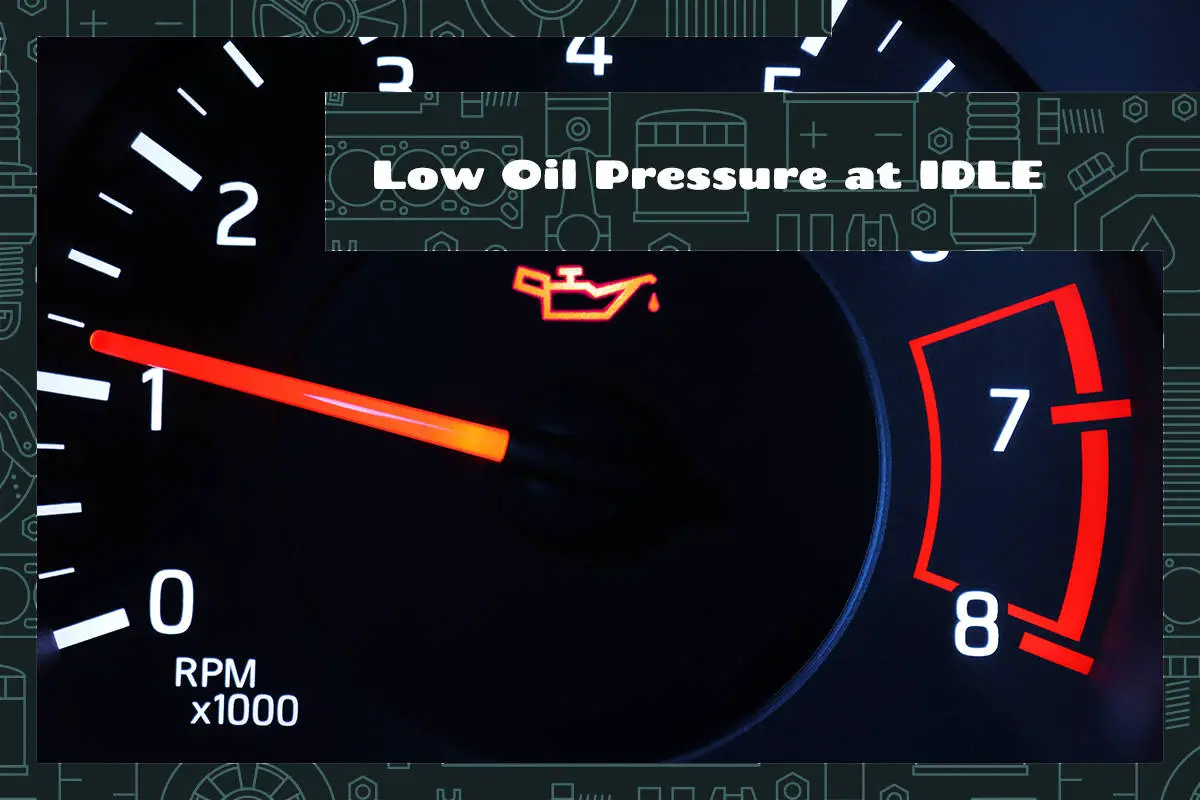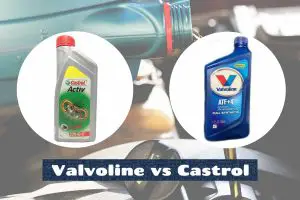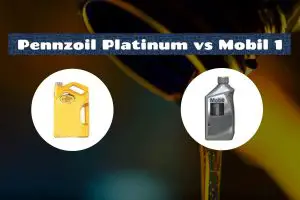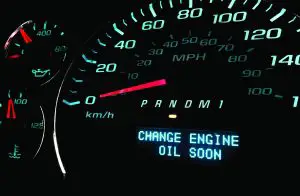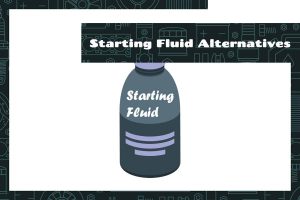Oil pressure is the force with which the oil moves through the engine. This pressure to remain at an optimal level, especially when a car is idling. When the oil pressure drops too low during idle, it can signal potential issues that might harm your engine in the long run.
Low oil pressure at idle is often caused by factors like the use of incorrect oil type, worn-out oil pumps, clogged filters, or engine wear. Addressing the issue may involve changing the oil, replacing the filter, or seeking professional inspection and repair.
In this guide, we will learn about the signs, causes, and remedies of low oil pressure at idle. If your car struggles to maintain a steady RPM rating while idling, this guide is for you.
What Is Oil Pressure?
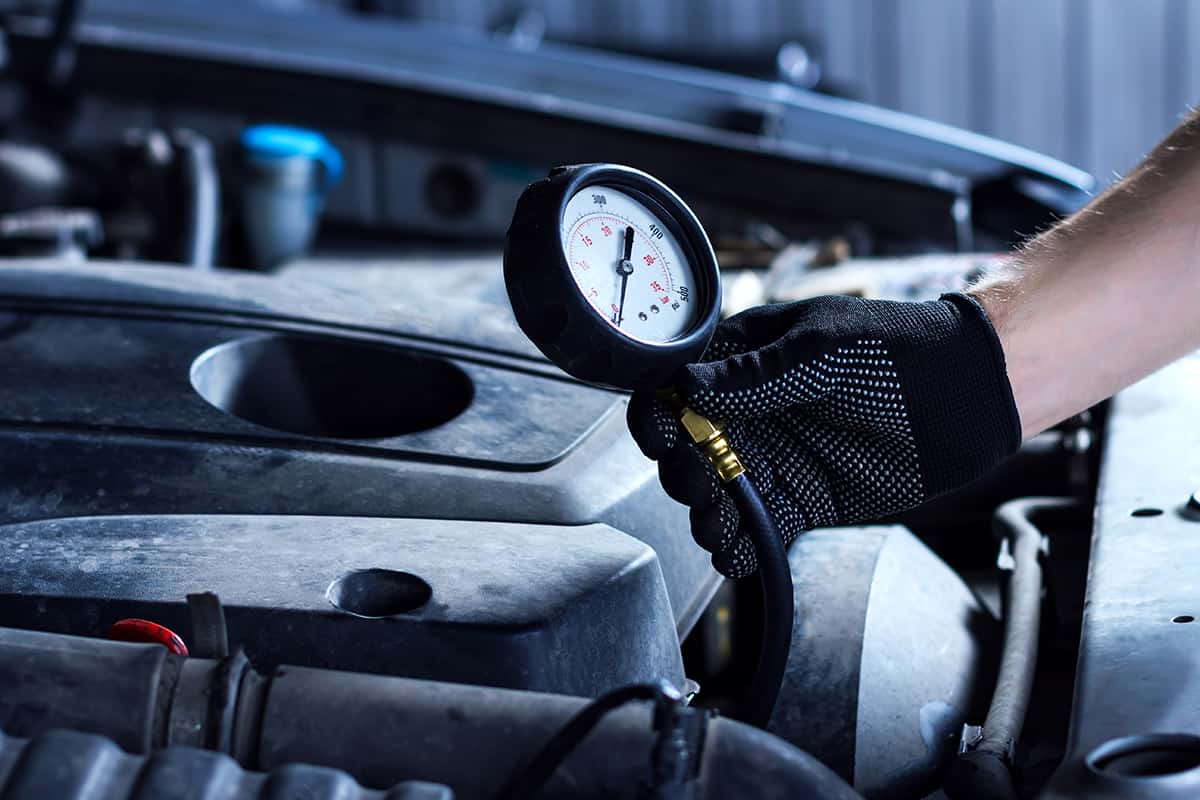
Oil pressure, in the simplest terms, is the measure of the force with which engine oil is pushed through the engine. This pressure is generated by the oil pump, which circulates the oil through the engine to lubricate its moving parts.
Engine oil is also a protective layer for the engine’s components. The following points will help you understand why maintaining proper oil pressure levels is important:
- Preventing Friction: Engine components are in constant motion. Proper oil pressure ensures that there’s a continuous film of oil between these moving parts, preventing direct metal-to-metal contact.
- Temperature Regulation: Engines generate heat. Oil, thanks to its pressure, circulates efficiently to carry away some of this heat, preventing the engine from overheating.
- Delivering Nutrients and Removing Contaminants: Engine oil contains additives that protect and clean the engine. With appropriate pressure, these additives can reach all parts of the engine, while at the same time, the oil captures and transports contaminants to the oil filter.
Oil pressure can be monitored using an oil pressure gauge or sensor, typically found on the dashboard of most vehicles. These instruments provide a real-time reading of the engine’s oil pressure, usually in PSI (pounds per square inch).
- Normal Range: While the optimal range can vary depending on the vehicle, most cars operate best between 25 to 65 PSI.
- Low Oil Pressure Warning: Many vehicles come equipped with a warning light that illuminates if the oil pressure drops below a safe threshold. If this light comes on, you need to address the issue promptly to prevent potential engine damage.
Signs of Low Oil Pressure at Idle
During idle moments, like when waiting at traffic lights, it’s natural for the oil pressure to slightly decrease. However, a substantial drop in pressure can be detrimental. The following signs may indicate that your car’s oil pressure has dropped to critical levels while idling:
1. Warning Lights on the Dashboard
When the pressure drops below the manufacturer’s recommended level, the oil pressure warning light turns on. While many drivers might occasionally see this light flicker during start-up, especially in cold conditions, a consistent illumination during idle is a cause for concern and warrants immediate attention.
2. Noisy Engine Operation
Engine noise can be an informative cue about the car’s health. When oil pressure is low, you might hear:
- Ticking Sounds: This sound typically originates from the valve lifters, which are deprived of adequate lubrication due to low oil pressure. The ticking noise is more pronounced during idle since there’s less ambient noise to mask it.
- Knocking Noises: This noise indicates that major engine components, like the crankshaft or connecting rods, aren’t receiving enough lubrication. Continuous knocking can lead to significant engine damage if not addressed promptly.
3. Decreased Engine Performance
A well-lubricated engine runs smoothly, ensuring optimal vehicle performance. However, when oil pressure drops:
- Stalling: The vehicle might experience sporadic stalling during idle, a sign that components aren’t interacting as seamlessly as they should due to insufficient lubrication.
- Rough Idle: Instead of a smooth and quiet operation, the engine might vibrate or shake noticeably. This rough idle can be attributed to irregularities in engine combustion, which can be aggravated by low oil pressure.
4. Physical Oil Checks Show Low Levels
Even without technical instruments, a driver can get a sense of oil pressure by conducting manual checks:
- Dipstick Reading: If the reading consistently shows levels below the ‘minimum’ mark, it could indicate a leak or consumption issue leading to reduced oil pressure. While you’re checking oil levels, you should also inspect its color for irregularities.
- Oil Spots Under the Car: You may notice oil spots or puddles beneath the parked car can indicate oil leaks—a direct cause of decreased oil pressure.
Common Causes of Low Oil Pressure at Idle (and Fixes)
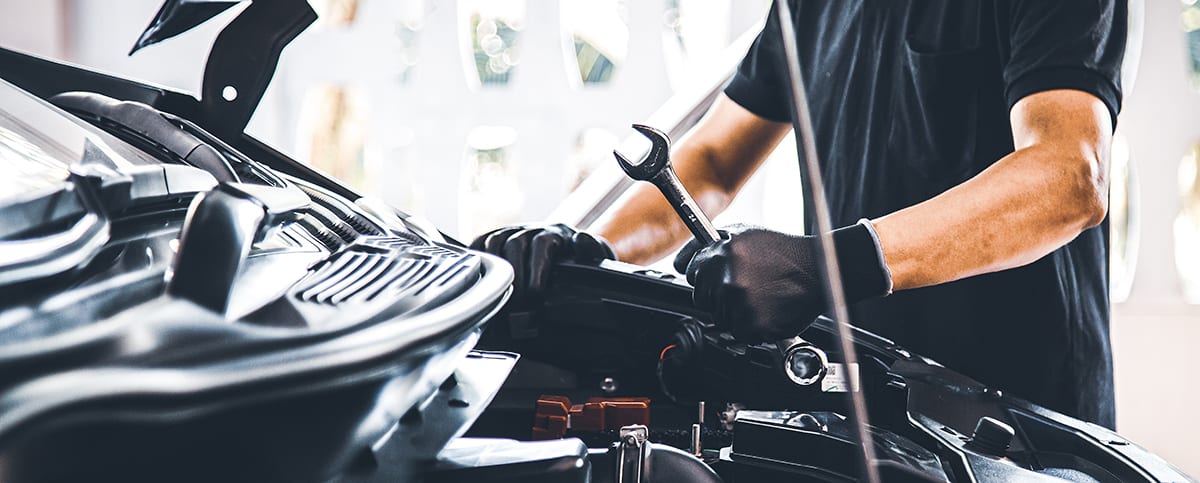
To tackle problems related to low oil pressure, you should first pinpoint the cause. Here, we’ll cover the most common causes of low oil pressure at idle and what you can do about them.
1. Faulty Oil Pressure Gauge or Sensor
Sometimes, the issue might not be with the oil pressure itself but with the devices that measure it. A malfunctioning gauge or sensor can give false readings. This is rare but not unheard of.
Fix:
Before taking significant actions, it’s wise to check the accuracy of the gauge or sensor. If they’re found to be faulty, a replacement can resolve the perceived issue.
2. Using the Incorrect Oil Viscosity
Oil viscosity refers to the oil’s resistance to flow. If the viscosity is not right for the vehicle, it can impact oil pressure. Using too thin oil can reduce resistance, leading to quicker flow but lower pressure. Conversely, overly thick oil might not flow as freely, especially in cold conditions, causing inadequate lubrication during startup.
Fix:
Always refer to the vehicle’s owner manual for the recommended oil viscosity. Regular oil changes with the correct type can prevent viscosity-related issues.
3. Worn-Out Oil Pump
The oil pump is the primary driver of oil pressure in an engine. The pump’s components can wear out with time, leading to inefficient pumping and reduced oil pressure. Signs of a failing pump can include noise from the pump area or decreased overall engine performance.
Fix:
If the pump is the culprit, replacement is often the best solution. It’s advisable to get a professional diagnosis and not to delay pump replacement, as prolonged low pressure can damage the engine.
4. Clogged Oil Filter or Passages
Oil filters trap contaminants, ensuring that only clean oil circulates within the engine. The filter can become clogged over time and restrict oil flow and lead to low pressure. Similarly, oil passages can accumulate sludge or debris, impeding the oil’s movement.
Fix:
Changing the oil filter as per the manufacturer’s recommendation can prevent clogs. If oil passages are blocked, an engine flush might be required to clear out the obstruction.
5. Engine Wear
The engine’s components naturally wear out, which can influence oil pressure. As components wear, gaps between them can enlarge, allowing oil to flow more freely but reducing the overall pressure. The most affected areas include the main and rod bearings.
Fix:
Extensive engine wear might require a rebuild or replacement of worn components. Regular maintenance and using quality oil can slow down wear and prolong engine life.
6. Damaged Relief Valve
The relief valve in the oil pump maintains optimal oil pressure by redirecting excess oil back to the pan. If the relief valve sticks or malfunctions, it can either trap too much oil, leading to excessively high pressure, or release too much, causing the pressure to drop.
Fix:
Inspecting the relief valve for damage or blockages can pinpoint the issue. If malfunctioning, the valve should be replaced to ensure stable oil pressure.
